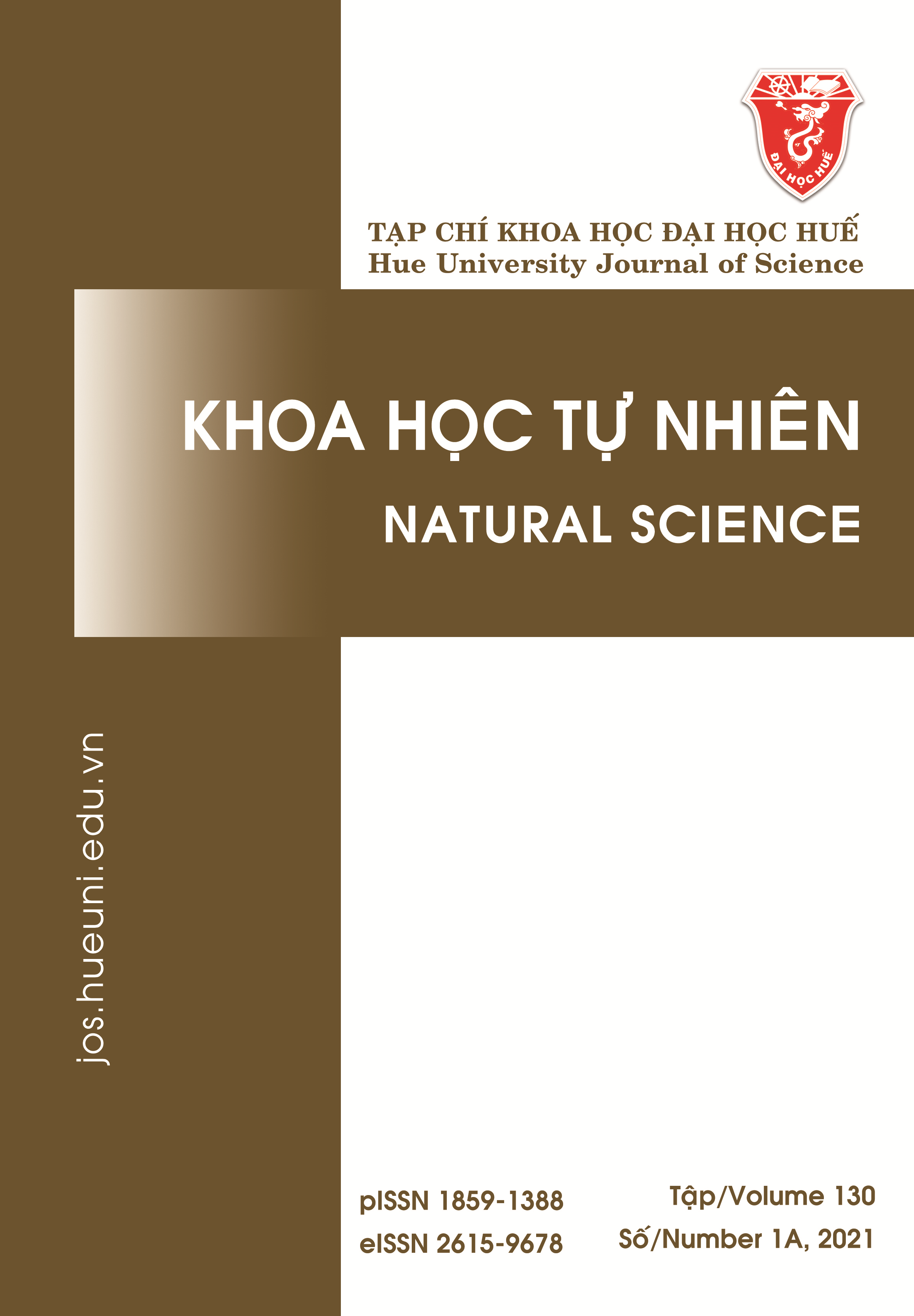Abstract
Highly dispersed BaTiO3 nanospheres with a uniform particle size were synthesized with the hydrothermal method. The influence of Ba/Ti molar ratios on the formation of BaTiO3 nanospheres was studied by analyzing the XRD and SEM data. The TiO2·H2O synthesized with the sulfuric acid method assisted by ultrasonication was used as a starting material. Highly dispersed BaTiO3 nanospheres with an average size of about 100 nm were obtained at 200 °C in 12 hours with a Ba/Ti ratio of 1.5. The Ba/Ti ratios have a strong influence on the formation of nano BaTiO3 and the phase transition. The particle size increases with the Ba/Ti ratio, while the uniformity decreases.
References
- Nikolarakis PN, Asimakopoulos IA, Zoumpoulakis L. Design and Construction of Capacitors with the Use of Nano-Barium Titanate’s (BaTiO3) Composite Materials. Journal of Nanomaterials. 2018;2018:1-11.
- Cheng J, Chen Y, Wu JW, Ji XR, Wu SH. 3D printing of BaTiO3 piezoelectric ceramics for a focused ultrasonic array. Sensors. 2019;19(4078):1-8.
- Gromada M, Biglar M, Trzepieciński T, Stachowicz F. Characterization of BaTiO3 piezoelectric perovskite material for multilayer actuators. Bulletin of Materials Science. 2017;40(4):759-71.
- Jung WS, Park J, Park Y, Yoon DH. Effects of impurities on the properties of BaTiO3 synthesized from barium titanyl oxalate. Ceramics International. 2010;36(6):1997-2002.
- Gomes MdA, Magalhães LG, Paschoal AR, Macedo ZS, Lima ÁS, Eguiluz KIB, et al. An Eco-Friendly Method of BaTiO3 Nanoparticle Synthesis Using Coconut Water. Journal of Nanomaterials. 2018;2018:1-7.
- Sobha A, Sumangala R. Influence of Synthesis Method and the Precursor on the Preparation of Barium Titanate Nano Particles. Research & Reviews: Journal of Material Sciences. 2018;6(3):175-82.
- Taheri A, Tajally M, Mirzaee O. Comparison between microwave and conventional calcination techniques in regard to reactivity and morphology of co-precipitated BaTiO3 powder, and the electrical and energy storage properties of the sintered samples. Ceramics International. 2017;43(11):8057-64.
- Lee BW, Kim HK, Cho SB. Hydrothermal Preparation of BaTiO3 Powders from Modified Hydroxide Precursors. Ferroelectrics. 2011;333(1):233-41.
- Lee BW, Cho SB. Hydrothermal Preparation and Characterization of Ultra-Fine BaTiO3 Powders from Amorphous Peroxo-Hydroxide Precursor. Journal of Electroceramics. 2004;13(1-3):379-84.
- Hasbullah NN, Lee OJ, Chyi JLY, Chen SK, Talib ZA. Synthesis of BaTiO3 Nanoparticles via Hydrothermal Method. Solid State Phenomena. 2017;268:172-6.
- Hongo K, Kurata S, Jomphoak A, Inada M, Hayashi K, Maezono R. Stabilization mechanism of the tetragonal structure in a hydrothermally synthesized BaTiO3 nanocrystal. Inorganic chemistry. 2018;57(9):5413-9.
- Lee SK, Park TJ, Choi GJ, Koo KK, Kim SW. Effects of KOH/BaTi and Ba/Ti ratios on synthesis of BaTiO3 powder by coprecipitation/hydrothermal reaction. Materials Chemistry and Physics. 2003;82(3):742-9.
- Her YS, Matijevi E, Chon MC. Preparation of well-defined colloidal barium titanate crystals by the controlled double-jet precipitation. Journal of Materials Research. 1995;10(12):3106–14.
- Han J-M, Joung M-R, Kim J-S, Lee Y-S, Nahm S, Choi Y-K, et al. Hydrothermal Synthesis of BaTiO3 Nanopowders Using TiO2 Nanoparticles. Journal of the American Ceramic Society. 2014;97(2):346-9.
- Sasirekha N, Rajesh B, Chen Y-W. Hydrothermal Synthesis of Barium Titanate: Effect of Titania Precursor and Calcination Temperature on Phase Transition. Ind Eng Chem Res. 2008;47(6):1868-75.
- Liu N, Zhao W, Rong J. CO2-driven synthesis of monodisperse barium titanate microspheres. Journal of the American Ceramic Society. 2017;101(4):1407-11.
- Magnone E, Kim JR, Park JH. The effect of the hydrothermal synthesis variables on barium titanate powders. Ceramics International. 2016;42(8):10030–6.
- Duong NT, Vuong LD, Son NM, Tuyen HV, Chuong TV. The synthesis of TiO2 nanoparticles using sulfuric acid method with the aid of ultrasound. Nanomaterials and Energy. 2017;6(2):82-8.
- Li W, Ni C, Lin H, Huang CP, Shah SI. Size dependence of thermal stability of TiO2 nanoparticles. Journal of Applied Physics. 2004;96(11):6663-8.
- He S, Sun H, Tan Dg, Peng T. Recovery of Titanium Compounds from Ti-enriched Product of Alkali Melting Ti-bearing Blast Furnace Slag by Dilute Sulfuric Acid Leaching. Procedia Environmental Sciences. 2016;31:977-84.
- Joung MR, Kim JS, Song ME, Choi JH, Nahm S, Choi CH, et al. Synthesis of highly tetragonal BaTiO3 nanopowders by a two-step alkoxide–hydroxide route. Journal of Alloys and Compounds. 2011;509(37):9089-92.
- Li M, Gu L, Li T, Hao S, Tan F, Chen D, et al. TiO2-Seeded Hydrothermal Growth of Spherical BaTiO3 Nanocrystals for Capacitor Energy-Storage Application. Crystals. 2020;10(3):1-15.
- Selvaraj M, Venkatachalapathy V, Mayandi J, Karazhanov S, Pearce JM. Preparation of meta-stable phases of barium titanate by Sol-hydrothermal method. AIP Advances. 2015;5(11):1-10.
- Gao J, Shi H, Dong H, Zhang R, Chen D. Factors influencing formation of highly dispersed BaTiO3 nanospheres with uniform sizes in static hydrothermal synthesis. Journal of Nanoparticle Research. 2015;17(7):1-17.
- Hwang UY, Park HS, Koo KK. Low-Temperature Synthesis of Fully Crystallized Spherical BaTiO3 Particles by the Gel–Sol Method. Journal of the American Ceramic Society. 2004;87(12):2168-74.

This work is licensed under a Creative Commons Attribution-ShareAlike 4.0 International License.
Copyright (c) 2021 Array




